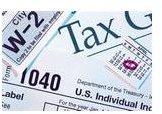Guide To Tax Changes Year End Planning: What's New for 2010?
2010 IRS Tax Numbers
While there are changes to the tax code every year, there are some things about income taxes that change every year without any new laws or regulations. Many tax breaks, deductions, credits, and even tax rates are automatically adjusted each year. Most tax numbers that change with each tax year are adjusted by a formula that ties them to the inflation rate. Knowing the new tax numbers for 2010 is the first step to year-end tax planning.
The personal exemption stays the same this year as it was for 2009. In addition, the threshold for being considered a household employee, the so-called “Nanny Tax” is $1,700 just like it was in 2010.
2010 IRS Mileage Deduction
The mileage rate for 2010 is 50 cents per mile for business use or unreimbursed travel required by your employer. The standard mileage deduction for medial travel is 16.5 cents per mile in 2010.
IRA Deduction Limits Increased
The amount of money you can earn and still deduct IRA contributions has increased to $66,000 for single filers and $109,000 for married filing jointly.
Roth IRA Contribution Limits Increased
The 2010 Roth IRA contribution limits have been increased to $120,000 for single and $177,000 for married filing joint, although your contribution limit may be reduced if you are at the high income end.
However, good news for high-income taxpayers looking to convert to a Roth IRA. The maximum income limit for Roth IRA conversions has been repealed permanently beginning in 2010.
Other tax changes happen because tax deductions, credits, or exemptions expired or were repealed for the following tax year during the previous year. Some tax changes from those include:
- Disaster losses of personal property from federally declared disaster areas do not apply for 2010 and later.
- The so-called Bush Tax Cuts expire at the END of 2010 and will not affect income taxes for the year.
New Tax Law Changes
While some tax rules and numbers change automatically, others are changed or extended by new laws.
The original closing deadline for the First-Time Home Buyer Credit was June 30th. However, all taxpayers who entered into a contract to buy a home as of April 30th, will qualify for the credit if the purchase closed by September 30, 2010.
The American Recovery and Investment Act (ARRA) made changes to the Hope Credit used to pay for college related expenses that expire next year, but continue to be applicable for 2010. The full credit is still available to higher income taxpayers up to $160,000 for married and $80,000 for single. A reduced credit is available for those with incomes above these limits.
The Health Coverage Credit increased from 65 percent to 80 percent of qualified health insurance premiums in 2010.
The energy tax credit for improvements to your home’s energy efficiency was increased to 30 percent of the total cost of all items purchased during 2010.
The Making Work Pay credit that was part of the economic stimulus package was implemented in the form of reduced withholdings for most taxpayers, meaning that there is no need to include it in end of year tax planning for traditional W-2 employees. However, small business owners and others who do not have withholdings automatically deducted from a regular paycheck may want to consider adjusting there quarterly estimated tax payment for year end.
This guide to tax changes and year end planning will help you be ahead of the game before your tax filings are due.
Image Credit (Internal Revenue Service)
References - IRS - https://www.irs.gov
